Swedish photographer, Alex Dawson has been named as Underwater Photographer of the Year 2024 for his image ‘Whale bones’. The photo portrays a breath-hold diver exploring a minke whale skeleton under the Greenland ice sheet. According to Dawson ” from a stable population of over 100 000 minke whales in the North Atlantic the hunters of Tasiilaq typically take less than a dozen” and they share and process their catch between each other, the families use almost all parts of the whale, but the skeleton is left behind.
Despite depicting the by-product of small scale whaling the evocative image raises awareness about the declining number of marine life and wildlife in general. Former marine biologist and esteemed competition judge Alex Mustard said that “the masterful composition invites him to consider our impact on the great creatures of this planet”.
Underwater photographers capturing the least known parts of our blue planet work under challenging conditions to share the wonders of the sea. The UPY competition showcases underwater images from photographers all over the world and selects winners in twelve categories, like macro, behaviour, wrecks or compact with three categories showcasing exclusively the British Waters. Additionally, another category, the ‘Save Our Seas Foundation’ Marine Conservation Photographer of the Year title is awarded.
For the full list of winners and runner ups click here.
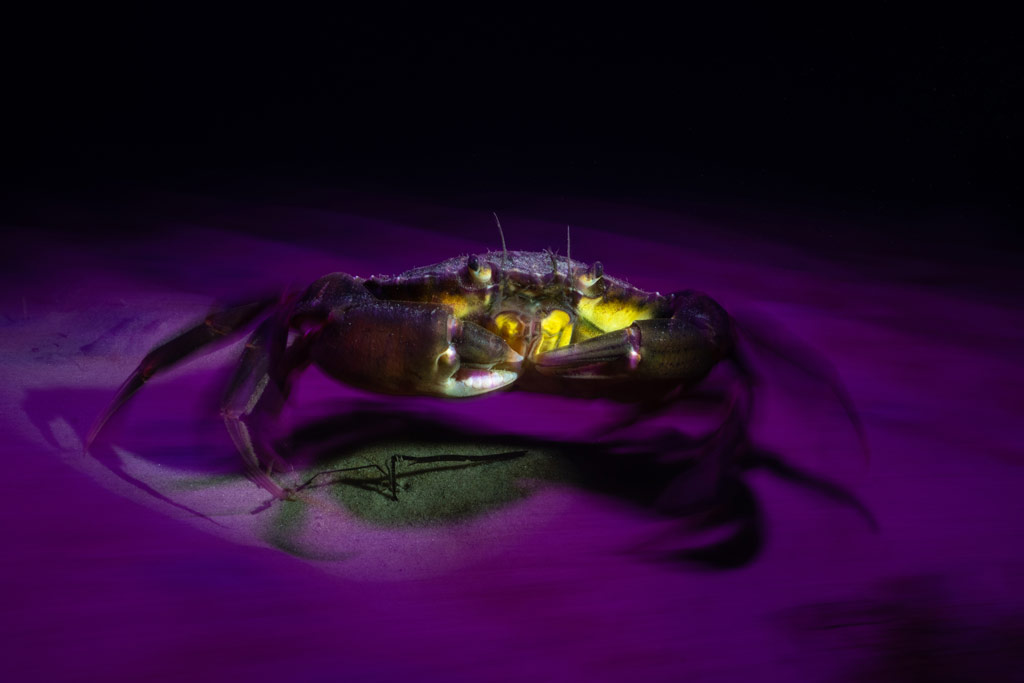
From Underwater Photographer of the Year, 19th February 2024. London, UK:
An emotive photograph showing a freediver examining the aftermath of whaling sees Alex Dawson from Sweden named Underwater Photographer of the Year 2024. Dawson’s photograph ‘Whale Bones’ triumphed over 6500 underwater pictures entered by underwater photographers from around the world.
“Whale Bones was photographed in the toughest conditions,” explains chair of judging panel Alex Mustard, “as a breath-hold diver descends below the Greenland ice sheet to bear witness to the carcasses. The composition invites us to consider our impact on the great creatures of this planet. Since the rise of humans, wild animals have declined by 85%. Today, just 4% of mammals are wildlife, the remaining 96% are humans and our livestock. Our way needs to change to find a balance with nature.”
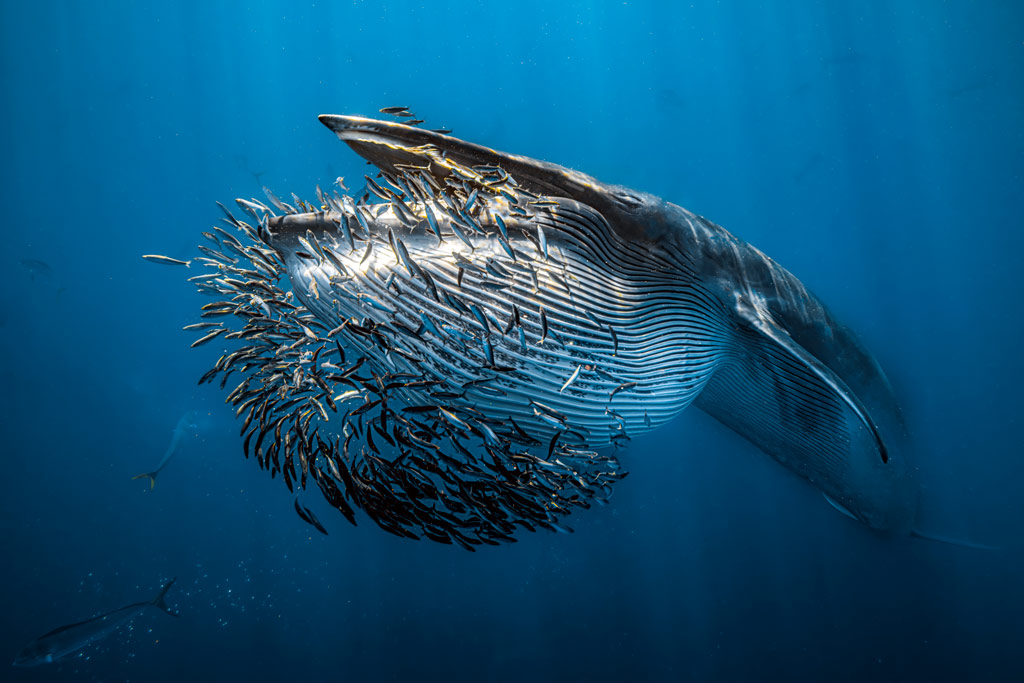

Whales dominated the winning pictures this year with Spanish photographer Rafael Fernandez Caballero winning two categories with his revealing photos of these ocean giants: a close up of a grey whale’s eye and an action shot of a Bryde’s whale engulfing an entire bait ball, both taken in Magdalena Bay, Baja California, Mexico. Fernandez Caballero took ‘Grey Whale Connection’ while drifting in a small boat, holding his camera over the side in the water to photograph the curious whale. ‘The End Of A Baitball’ required Fernandez Caballero to dive down and be in exactly the right place at the moment the whale lunged. “The photo shows the high speed attack,” he said, “with the whale engulfing hundreds of kilograms of sardines in one bite — simply unforgettable to see predation on such a scale.”
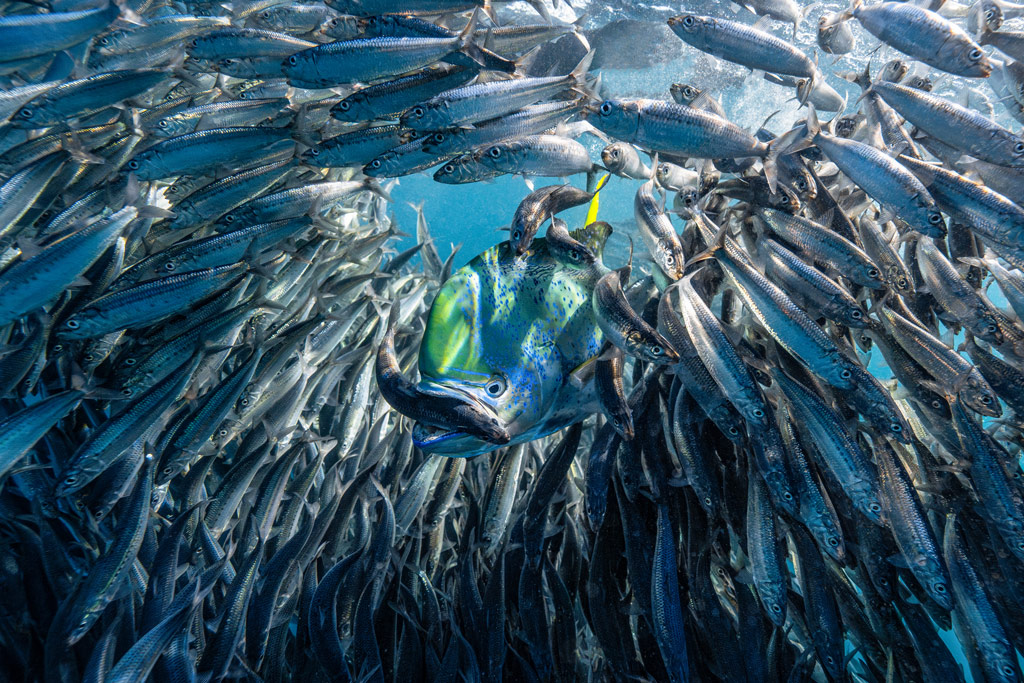
Lisa Stengel from the United States was named Up & Coming Underwater Photographer of the Year 2024 for her image of a mahi-mahi catching a sardine, in Mexico. Stengel used both a very fast shutter speed and her hearing to catch the moment. “If you listen there’s an enormous amount of sound in the ocean,” she explained. “The action was too fast to see, so I honed in on the sound of the attacks with my camera to capture this special moment.”
“It is such an exciting time in underwater photography because photographers are capturing such amazing new images, by visiting new locations and using the latest cameras,” commented judge Alex Mustard. “Until this year I’d hardly ever see a photo of a mahi mahi, now Lisa has photographed one hunting, action that plays out in the blink of an eye.”

The Underwater Photographer of the Year contest is based in the UK, and Jenny Stock, was named as British Underwater Photographer of the Year 2024 for her image “Star Attraction”, which finds beauty in species of British wildlife that are often overlooked. Exploring the west coast of Scotland, Stock explained “in the dark green depths my torch picked out the vivid colours of a living carpet of thousands of brittle stars, each with a different pattern. I was happily snapping away, when I spotted this purple sea urchin and I got really excited.”

In the same contest, Portuguese photographer, Nuno Sá, was named ‘Save Our Seas Foundation’ Marine Conservation Photographer of the Year 2024, with his photo ‘Saving Goliath’, taken in Portugal. Sá’s photo shows beachgoers trying to save a stranded sperm whale. The picture gives us hope that people do care and want to help the oceans, but also warns us that bigger changes are needed. “The whale had been struck by a ship and its fate was sealed,” explains Sá. “An estimated 20,000 whales are killed every year, and many more injured, after being struck by ships-and few people even realise that it happens”
Macro category winner: ‘An abstract portrait of a Potbelly Seahorse’ by Talia Greis (Australia)
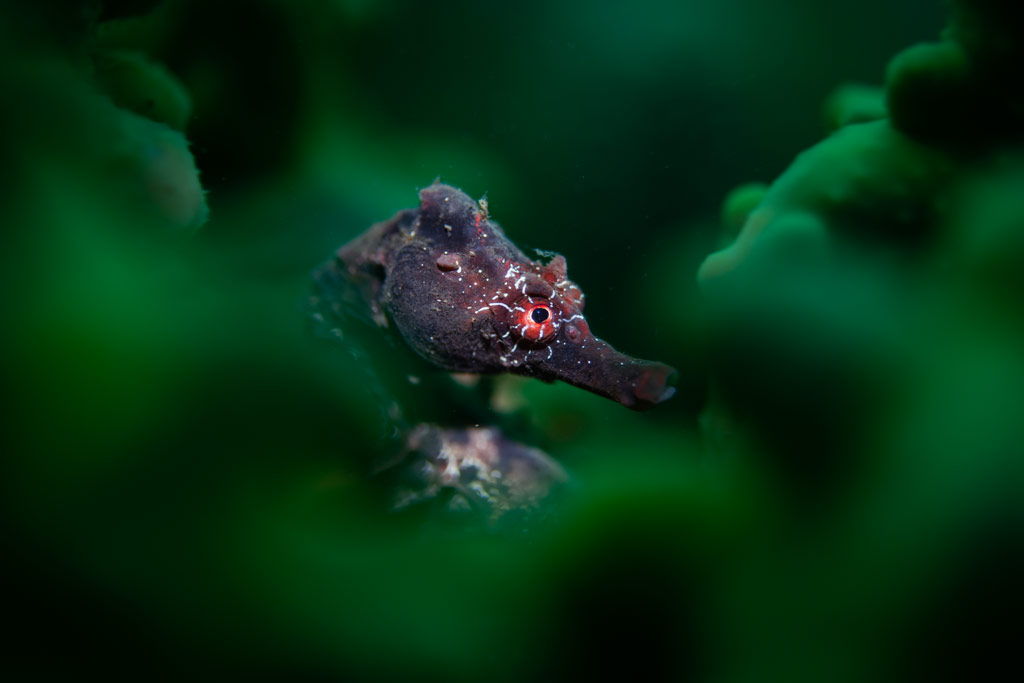
Wrecks category winner: ‘Chieftain Tanks’ by Martin Broen (United States)
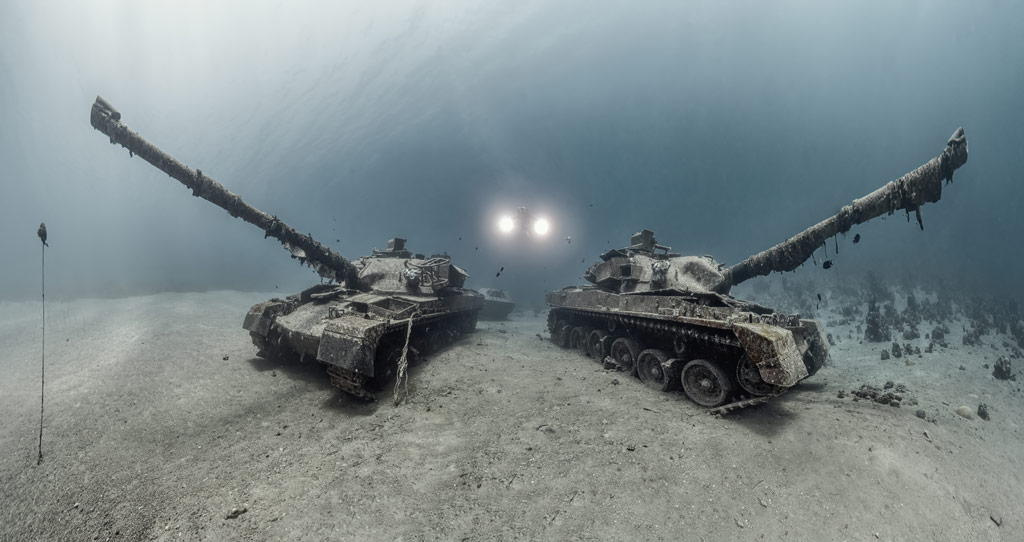
Black & White category winner: ‘Water Dancers’ by Jasmine Skye Smith (Australia)

Compact category winner: ‘Nudi on Fire’ by Enrico Somogyi (Germany)
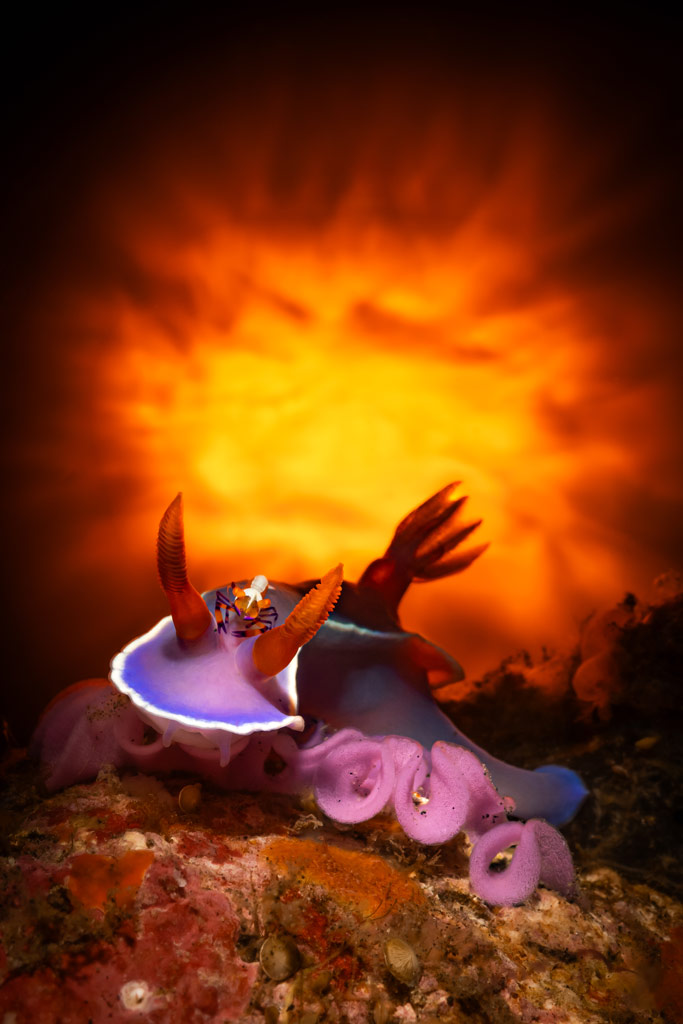
British Waters Wide Angle category winner: ‘Divebomb’ by Kat Zhou (United States)
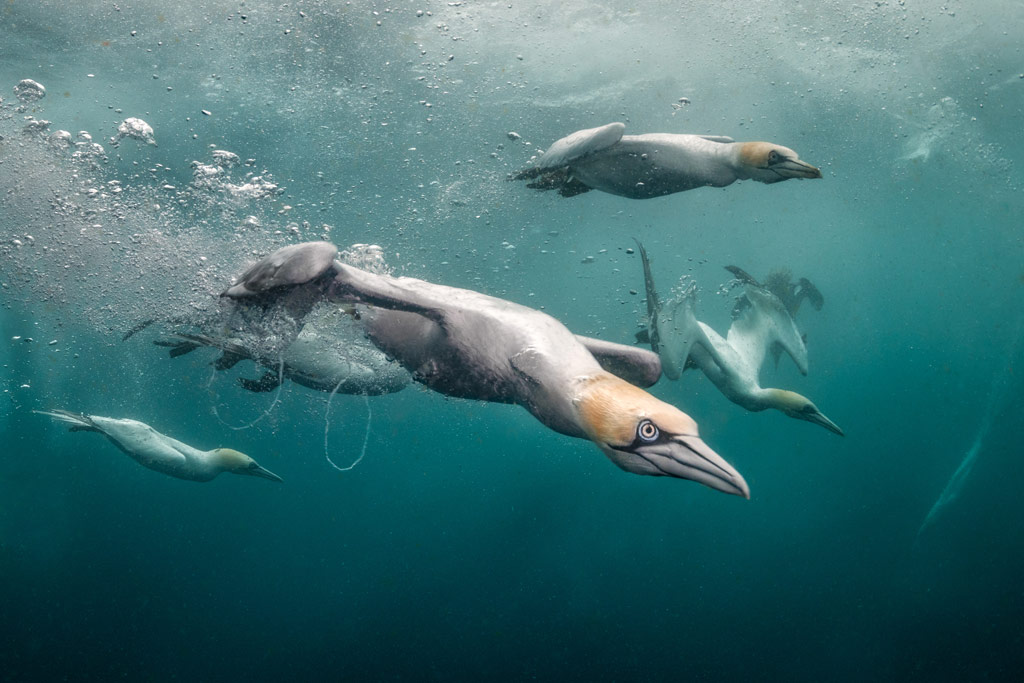
British Waters Living Together: ‘Bottled blenny’ by Kirsty Andrews (United Kingdom)
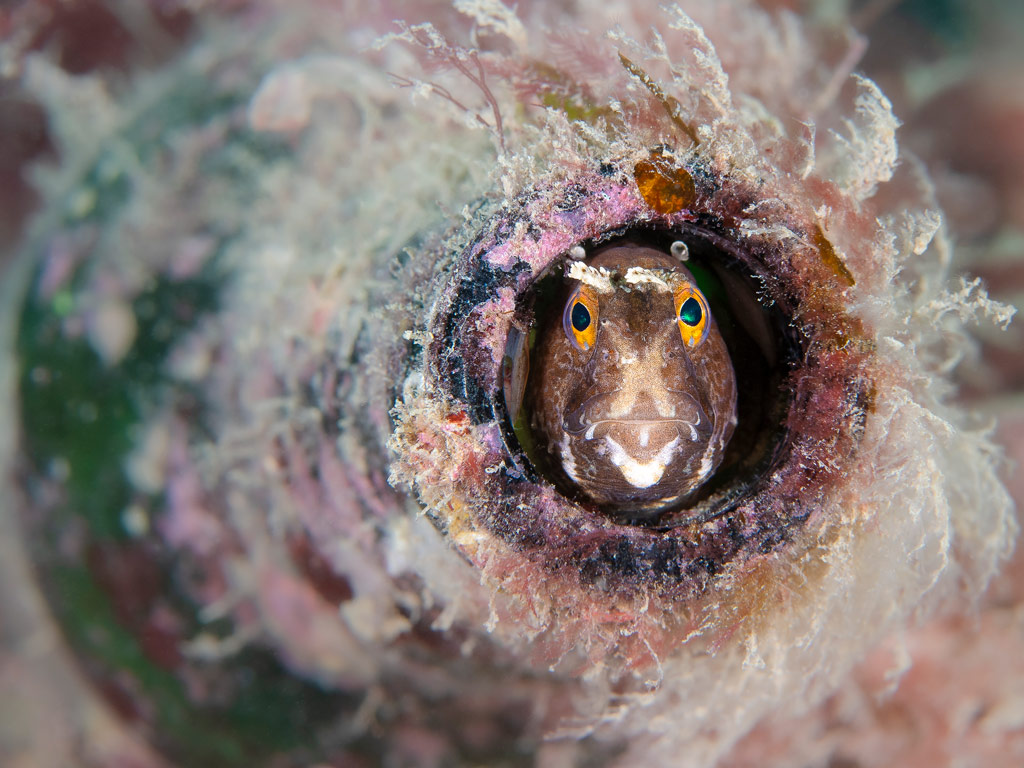
British Waters Compact category winner: ‘Catshark in Bootlace’ Jon Bunker (United Kingdom)

Related content:
- Best photography exhibitions
- Best photography competitions
- Best photography events and festivals to visit around the world
Follow AP on Facebook, Twitter, Instagram, YouTube and TikTok.






